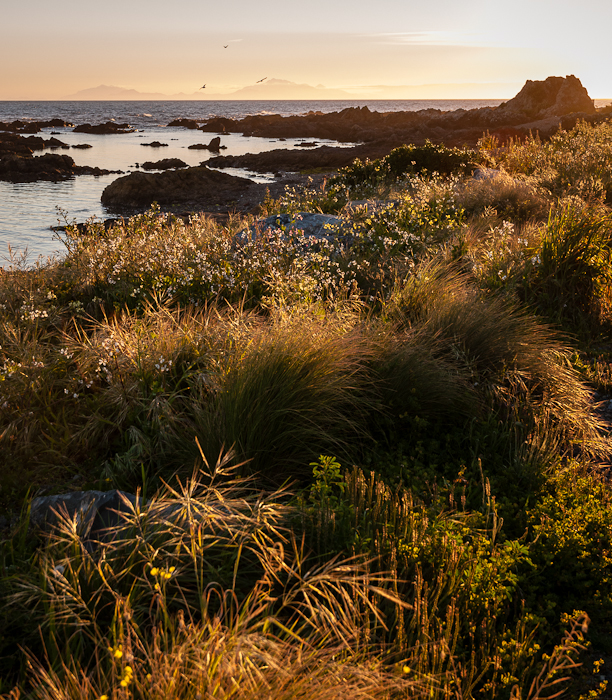A tui, sighted perched on a flower stalk (korari) of the flax commonly found along the south coast - wharariki or Phormium cookianum. I don't know who was more surprised, the agile bird feeding on nectar from the handily beak-shaped flowers, or me. A few seconds later this bird had flown - but not before I had done my paparazzi act. The bird's pose looks staged, but it was just in brief freeze mode before it flew - my attention apparently unwelcome for this perky performer.

There are noticeably more tui (Prosthemadera novaeseelandiae) around Wellington since a predator-free sanctuary was created. They are engaging birds, very vocal and good at mimicry (cellphone ringtones, for example!). From a distance they look a glossy black with a little tuft of white feathers at their throats and a light dusting of white feathers on the neck like a lacy collar. Closer up you can see that there are soft brown patches of feathers on the back and above the legs, and that the dark feathers have a greenish-blue iridescent sheen. The orange patch above its beak is pollen from the flowers it has been feeding on -

Wharariki flowers, showing the prominently positioned sticky bright orange pollen - as seen in the patch above the tui's beak. The pollen is placed so that it will brush on the visiting bird's head and thus be conveyed to another flower - cross pollination is required, and the flowers are shaped so that the feeding bird drinks deep into the flower. Very neat!









